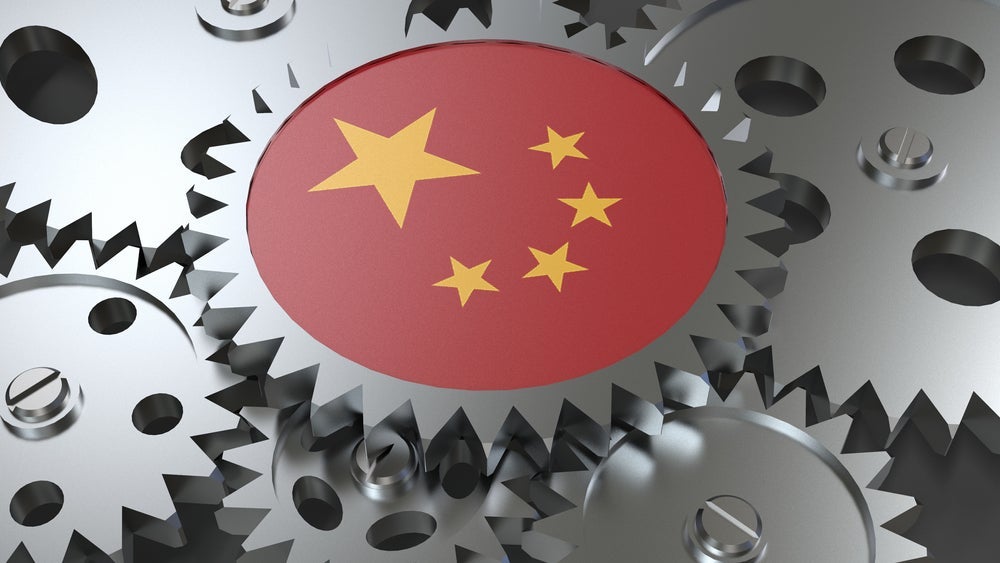
A series of headlines in the recent weeks summarise what has been for several years now a growing reality: international companies are not flocking to China like they used to, and the flow of traffic in the opposite direction has slowed too.
For example, earlier in November, Canada joined the club of countries erecting barriers to Chinese inbound investment as it seeks to challenge the country’s dominance of rare earth metals. Then in mid-November, the UK became the latest country to block a Chinese semiconductor investment as the global battle for semiconductor supply intensifies (the acquisition of the UK’s largest semiconductor fab, Newport Wafer, by a subsidiary of Shanghai-listed Wingtech was reversed on national security grounds).
Policies such as these, justified or not, are one reason why foreign direct investment (FDI) from China into the rest of the world has been in decline for some five years now. The trend began with Beijing’s increased capital controls on Chinese companies and, today, this rise in isolationism has continued via the ‘dual circulation’ programme (a strategy to reorient China’s economy by prioritising domestic consumption) and a regulatory crackdown on large companies (especially in tech).
The US trade war with China, Covid-19 and the war in Ukraine have, of course, significantly added to this slowdown, which is part of a broader economic decoupling between China and parts of the West, as well as the move towards nearshoring, ‘friendshoring’ and regionalisation (shorter, more strategic supply chains).
That said, the world has been slower to hit the brakes on investment to China but has hit them nonetheless. In fact, data from the past few years suggests that, while FDI to China is far from dead, a paradigm shift is taking place. One that has potentially disastrous consequences.
What are the numbers saying on Chinese investment?
China may finally be losing its appeal to investors as the combination of political and health crises take their toll.

US Tariffs are shifting - will you react or anticipate?
Don’t let policy changes catch you off guard. Stay proactive with real-time data and expert analysis.
By GlobalDataBack in 2019, China was the leading destination for FDI into Asia-Pacific, according to data from our FDI Projects Database, bringing in 854 projects that represented almost one-fifth (19.8%) of all inward investment in the region (ahead of India and Australia, which had 834 and 437 projects, respectively).
Unsurprisingly, investment to the country dropped by half in 2020 due to the pandemic but fell much harder in China than it did to India, which subsequently became the top destination for FDI in the region.
Interestingly, by 2021, despite witnessing an increase in investment projects, China slipped to third position, behind India with 713 projects and Australia with 511.
Although the US remained the largest foreign investor into China for the third consecutive year in 2021, recording 169 projects, these numbers still fall some way short of the pre-Covid 2019 figure, according to our FDI Projects Database. Germany, the second-largest foreign investor in China, has greatly reduced its investment in the country from 112 projects in 2019 to 51 in 2021. The UK, which places third for investment projects across this three-year period, also saw its investment decrease by nearly half, from 73 in 2019 to 38 in 2021. A similar story can be told about Japan, the fourth-largest investor nation to China.
Japan-based multinational SoftBank is one company that has notably moved away from investments in China. The provider of investment management services chose to reduce its outward investment in China in 2021, recording only one project, compared with ten in 2019, after Chinese regulatory authorities imposed strict antitrust laws and penalised a large number of tech companies for violation of laws and abuse of market power.
However, the most stark and concerning drop in interest in China comes from Taiwan. In 2019, China was the number one country for Taiwanese outbound FDI with 19 projects, ahead of the US (14), India (13) and Vietnam (12). By 2020, Taiwanese investment into India had increased with 20 projects recorded, ahead of Vietnam in second (13 projects) and the US in third with 12. China attracted a mere three projects, putting it in ninth position. This figure was to drop even further in 2021, with companies from Taiwan investing in only two projects in China, with the US, Germany and India the most popular destination markets.
In summary, with the exception of Hong Kong and Switzerland, China’s top ten FDI source countries reduced their investments in the country over the three years from 2019 to 2021, with the likes of India, South Korea, Singapore and Vietnam rising in popularity at its expense. In remains to be seen what 2022 figures will reveal. Preliminary statistics show that, in terms of capital expenditure going into China, FDI has risen, but project numbers (as per the above) may very well continue to show decline.
Chinese and European FDI shifts
New research shows that investment between China and Europe has become less and less diverse in recent years, in both directions. In fact, virtually no new European companies have chosen to enter the Chinese market in recent years, according to a report from US-based Rhodium Group.
In particular, China’s environment for foreign companies “deteriorated” in the second half of 2022, says Rhodium, adding that there could be an acceleration in European companies trying to reduce their dependence on China in light of rising geopolitical tensions, persistent and disruptive zero-Covid controls, and other economic uncertainties in China.
Rhodium finds that the top ten European companies investing in China made up nearly 80% of Europe’s total investments between 2018 and 2021, marking a sharp increase from 49% during the 2008–17 period. German carmakers Volkswagen, BMW and Daimler, along with chemicals giant BASF, led the way in China, accounting for 34% of all European FDI into the country by value in the past four years, while automotives, food processing, pharmaceutical/biotech, chemicals and consumer products manufacturing made up nearly 70% of all FDI on a sectoral basis, compared with 65% between 2013 and 2017, the report shows.
Meanwhile, four countries – Germany, the Netherlands, the UK and France – have made up 87% of the total European investment value in China in the past four years. In early September, BASF launched operations at its $10bn (€9.68bn) Zhanjiang plant – the largest investment project ever by a German business in China.
Investment trends from Chinese companies to Europe have also narrowed in recent years, with Chinese acquisitions of EU and UK companies becoming smaller in number and value, and increasingly focused on greenfield investment since barriers to mergers and acquisitions have risen, along with the rise of anti-Chinese FDI screening across the ‘West’ (for better and for worse).
Will China isolation lead to a bolder foreign policy?
While China and the West are far from disentangled and ‘out of love’, their orbits are increasingly independent of each other, economically and politically speaking.
This decoupling is evident in the world of FDI as more and more companies look for alternatives (albeit not entire replacements) for the Chinese market, while Chinese investors are exponentially more wary of Western screening mechanisms that, in many cases, are justified and in many others seem more like sinophobia.
Although this direction of travel is still in its early days, Chinese and Western companies could become far more siloed over the coming decade, without taking into account tensions related to Taiwan. Already the situation with regards to Taiwanese investment in China is stark, as the aforementioned numbers showed.
As an increasingly introspective Xi Jingping enters his third and most fragile term, there is a growing risk that economic isolationism takes hold. A more reclusive China could mean a more impulsive, hawkish China that is less strained by the shackles of economic connectivity.
Russia’s invasion of Ukraine shows that decades of economic cooperation do not necessarily promote peace and democracy. It also shows that economic integration can be weaponised by autocratic governments (Kremlin coercion via oil, for example), and can also be used as a bargaining chip (the sanctions and the ongoing corporate exodus from Russia).
While that balance sheet is not ideal, bargaining chips are sacred and all important. It is better to have some than none. Foreign investment to and from China is correcting itself for much-needed reasons (in many respects). It is crucial, however, that it does not overcorrect.







